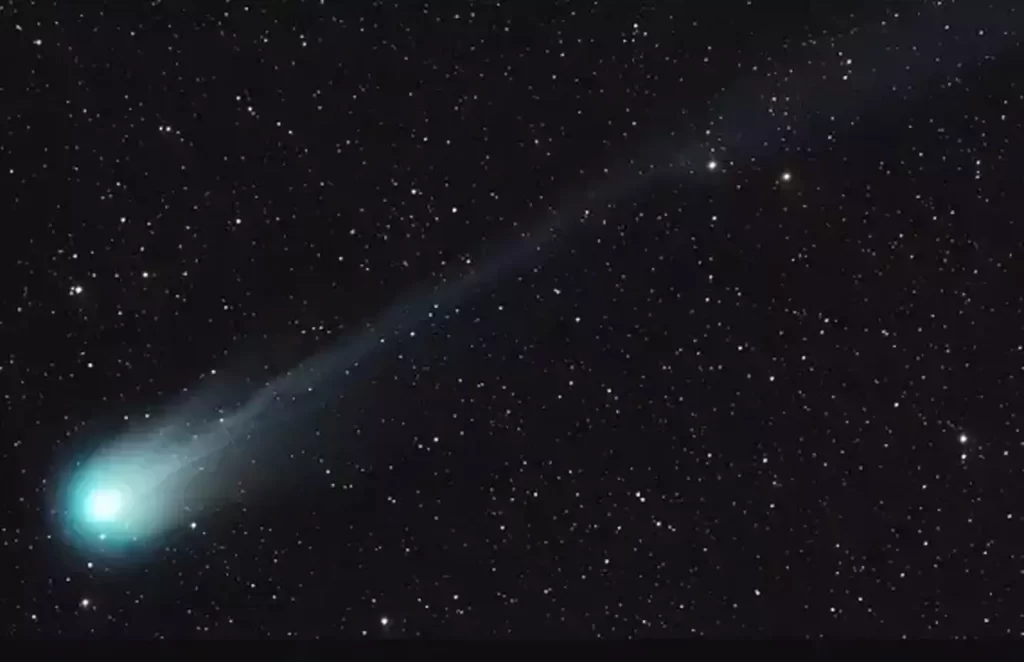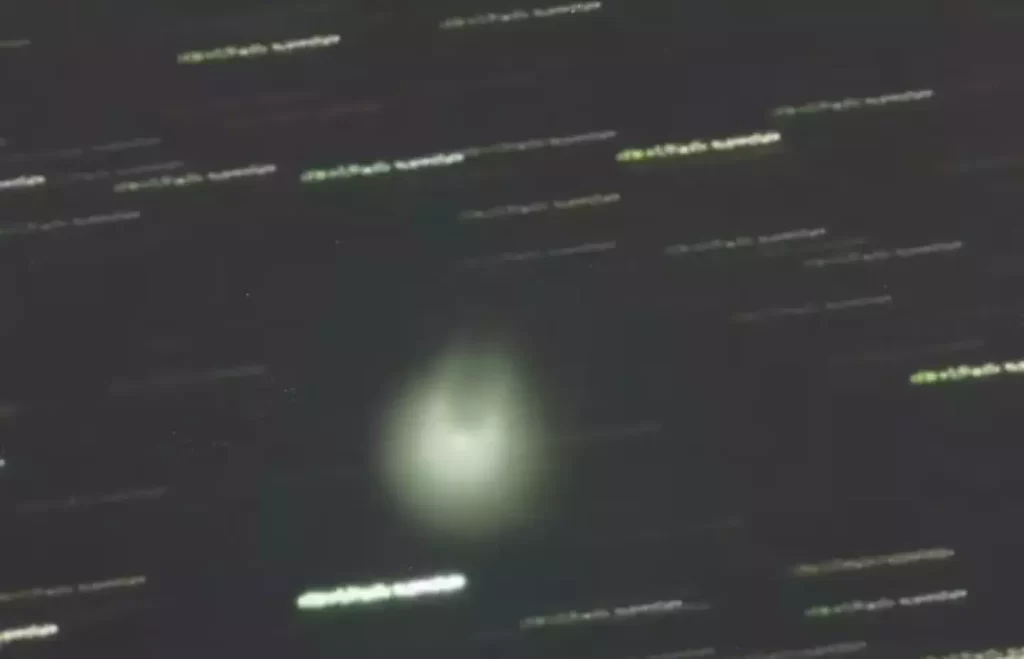How to see massive green ‘Mother of Dragons’ comet that’s only viewable for once-in-a-lifetime
In a celestial spectacle of rare proportions, an enormous comet dubbed 12P/Pons-Brooks, affectionately known as the ‘Mother of Dragons,’ graces the night sky of the Northern Hemisphere, offering a fleeting glimpse of its awe-inspiring presence. But time is of the essence for those seeking to behold this cosmic marvel.
Spanning an impressive 10.5 miles in diameter, this celestial wanderer dwarfs even the towering heights of Mount Everest, casting a mesmerizing glow as it embarks on its enthralling trajectory through the heavens. As it journeys through space, it leaves a trail of wonder in its wake, captivating the imagination of amateur astronomers and celestial enthusiasts alike.

To catch a glimpse of this celestial wanderer, one must cast their gaze upon the night sky, searching for the telltale sign of a green-hued blob adorned with a hazy tail trailing behind. This distinctive appearance, reminiscent of a dragon’s fiery breath, distinguishes the ‘Mother of Dragons’ amidst the vast expanse of space.
But beyond its captivating visage lies a tale of cosmic intrigue. Recent discoveries have unveiled the comet’s explosive nature, with two eruptions witnessed within a span of mere months. At its core lies a mesmerizing blend of dust, gas, and ice, known scientifically as cryomagma, a term that evokes both the chill of space and the fiery passion of celestial creation.

Yet, the comet’s name carries more than just a whimsical moniker. Researchers speculate that it may serve as the progenitor of the kappa-Draconids meteor shower, lending credence to its mythical title. Previously known as the ‘Devil Comet’ for its ominous appearance, 12P/Pons-Brooks continues to captivate with its enigmatic allure.
Time is of the essence for those eager to witness this celestial wonder, as its trajectory through the solar system affords us a brief window of opportunity. With each passing moment, the comet draws closer to the outer reaches of space, fading from view and eluding our gaze until its return, a distant prospect slated for the year 2095.

For those residing in the northern hemisphere, the time to seize this celestial spectacle is now. With each passing day, the ‘Mother of Dragons’ grows fainter, its luminous presence fading into the depths of space. So gather your binoculars, set your sights on the western horizon, and marvel at the majesty of the cosmos unfolding before your eyes.